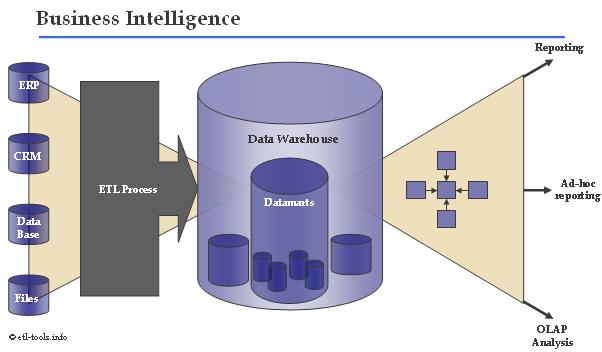Data warehouse
Data Warehouse is a central managed and integrated database containing data from the operational sources in an organization (such as SAP, CRM, ERP system).
It may gather manual inputs from users determining criteria and parameters for grouping or classifying records.
A source for the data warehouse is a data extract from operational databases. The data is validated, cleansed, transformed and finally aggregated and it becomes ready to be loaded into the data warehouse.
That database contains structured data for query analysis and can be accessed by users.
The data warehouse can be created or updated at any time, with minimum disruption to operational systems. It is ensured by a strategy implemented in a ETL process.
Data warehouse is a dedicated database which contains detailed, stable, non-volatile and consistent data which can be analyzed in the time variant.
Sometimes, where only a portion of detailed data is required, it may be worth considering using a data mart. A data mart is generated from the data warehouse and contains data focused on a given subject and data that is frequently accessed or summarized.

Keeping the data warehouse filled with very detailed and not efficiently selected data may lead to growing the database to a huge size, which may be difficult to manage and unusable. To significantly reduce number of rows in the data warehouse, the data is aggregated which leads to easier data maintenance and efficiency.
Key Data Warehouse systems and the most widely used database engines for storing and serving data for the enterprise business intelligence and performance management: